
The Right Honourable Mary Simon aims to be an Arctic fox
Canada’s first-ever Indigenous governor general doesn’t play favourites among our majestic natural wonders, but she...
Telkwa, B.C., is a small town at the confluence of the Telkwa and Bulkley rivers, 15 kilometres south of Smithers. Surrounded by mountains, the area is known for backcountry recreation, hunting and fishing, and abundant wildlife. In the fall, steelhead fishing enthusiasts from around the world flood the community. In the winter, skiers, snowshoers and snowmobilers head into the mountains.
Agriculture is a key part of the local economy. Farmers raise cattle, pigs and other livestock as well as myriad crops. The rivers are rich in salmon and provide an important source of food for the Wet’suwet’en, whose unceded territory the town dwells on.
An open-pit metallurgical coal mine is proposed for a site just seven kilometres away from the town, on a natural bench between Goathorn and Tenas creeks, both tributaries of the Telkwa. The mine would be in a caribou recovery area and just a few kilometres from an important salmon watershed. As the Tenas project proceeds through the provincial environmental assessment process, locals are raising concerns about potential impacts on water, wildlife and lifestyle.
Here’s what you need to know.
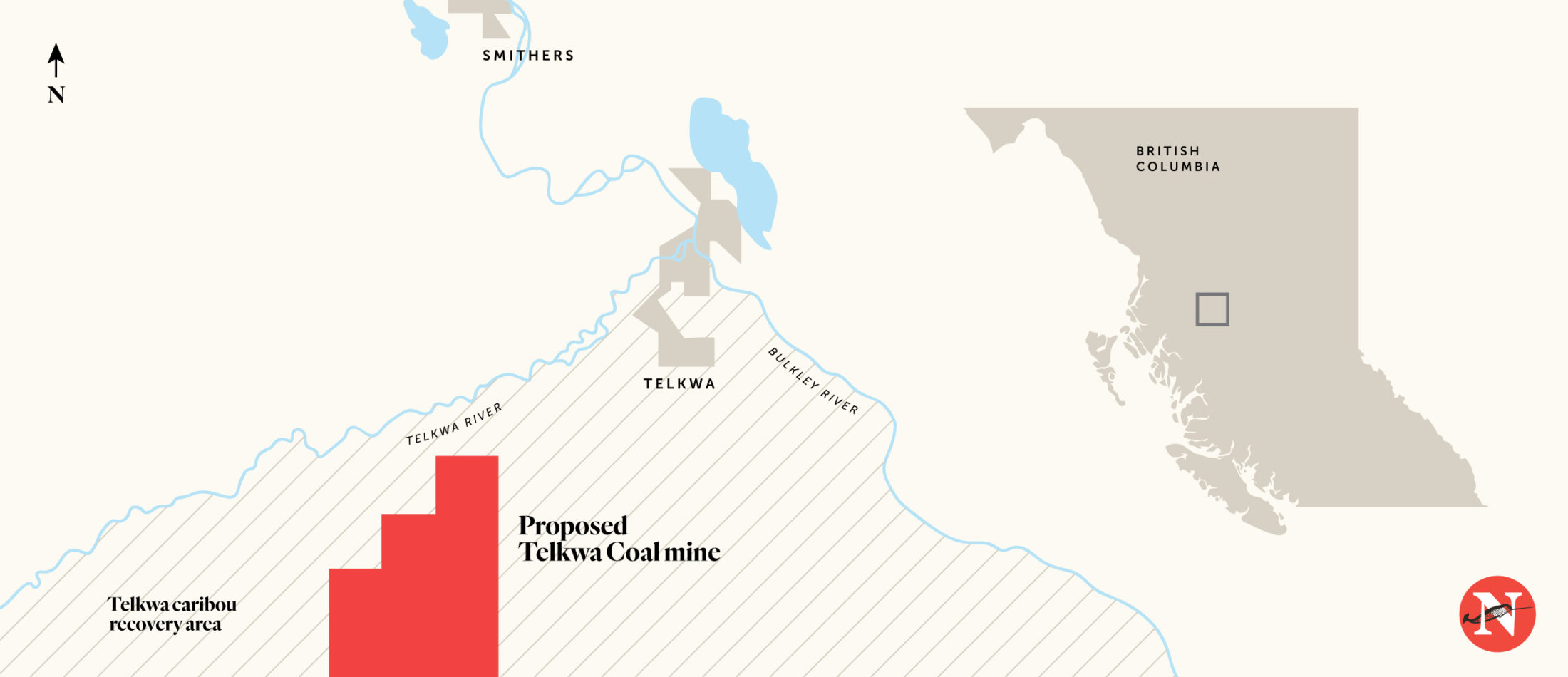
A map showing the proposed site of the Telkwa Coal mine. Map: Alicia Carvalho / The Narwhal
Since the early 20th century, coal mining has played a prominent role in the community’s history. One of the town’s main roads is even called Telkwa Coalmine Road. For more than 50 years, the fossil fuel was used locally and transported by rail. By the early 1970s, operations dwindled, but exploration never stopped.
Telkwa Coal — 90 per cent owned by Australian company Allegiance Coal and 10 per cent by Itochu Corporation of Japan — is the latest of several companies to propose a mine near Telkwa.
In 2014, Telkwa Coal acquired the rights to the site after multiple companies failed to develop a mine on the location. In 2017, talks began with the Office of the Wet’suwet’en and the provincial government.
The proposed Tenas coal mine is estimated to extend just over 1,000 hectares by the end of its 25-year lifespan. That includes a haul road, sediment ponds and a containment pond for potentially acid-generating rock, which is rock that can form acid when oxidized. That acid can then leach metals that can be harmful to aquatic life.
Tenas would be a much smaller operation than Teck Resources’ Elk Valley mine, which spans approximately 5,000 hectares and produces 10 megatonnes of steel-making coal per year. The Tenas coal mine would produce approximately 775,000 to 825,000 tonnes of steel-making coal annually.
The proposed Tenas project is now going through the B.C. environmental assessment process. A draft application information requirements document, which sets out the parameters of what the company needs to look at in terms of potential environmental impacts, has been submitted, and the public can comment on the project until July 23.
“We welcome feedback from the public and this feedback guides our decision-making,” said Angela Waterman, Telkwa Coal’s director of environment and government relations. “We believe that we can operate the mine safely and responsibly and deliver long-term benefits to the community.”
Nancy Cody — a resident of Telkwa and member of What Matters in Our Valley, a community group working to keep locals apprised of the proposed project — has been monitoring mine development plans since the 1980s. She isn’t convinced a coal mine in her backyard is safe.
“To me, the biggest risks are to the water, the wildlife and the fish,” said Cody, who’s lived off-grid in Telkwa for 40 years.
She told The Narwhal she attended a public consultation event for an earlier project proposed on the site. “Our house was smack dab in the middle of the load-out area.” Since then, she’s kept a close watch on any plans to develop the site.
Telkwa Coal touts the close proximity to town as beneficial. Existing infrastructure nearby lowers capital costs and means less impact on the landscape, the company said. Being situated so close to the CN rail line means the product can be shipped to market quickly via the existing coal terminal on Ridley Island in Prince Rupert. Plus, employees wouldn’t have to work in camps like so many mine workers in the region.
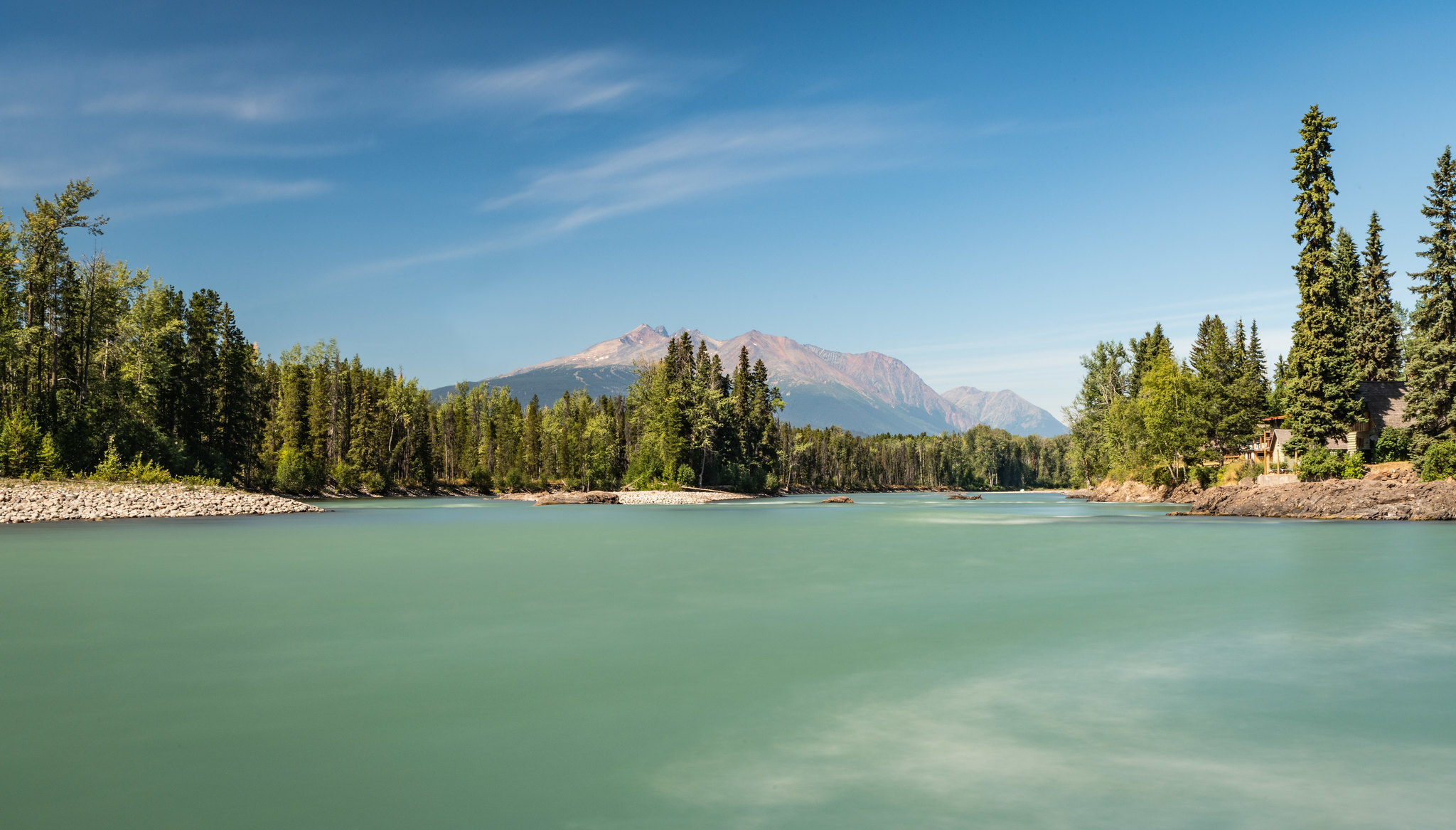
Locals are worried about the potential effects of the proposed Telkwa Coal mine on water in the region, including the Bulkley River, shown here just downriver from where it meets the Telkwa River. Photo: Dewey / flickr
“People look forward to having a mining job that will enable them to come home at night to sleep in their own bed,” Waterman said.
In a small rural town, opinions on development are often polarized. And Cody doesn’t want to be divisive.
“People are hungry for work, there’s no question,” she said. “But we need to create a more sustainable local economy. What can we do to create employment if coal is not the future? And coal is not the future.”
Waterman said the project will create 150 jobs during construction and employ 170 workers at peak operations.
The trade-offs for those jobs, Cody said, are significant risks to water and wildlife. She also points out that those jobs wouldn’t last forever as the mine would have a maximum 25-year lifespan, including construction and reclamation.
In addition to post-closure reclamation, the submerged potentially acid-generating rock would need to be monitored in perpetuity.
In B.C., mining companies give the government money in the form of bonds up front to cover the costs of reclamation and monitoring. But as The Narwhal reported earlier this year, the province only has $1.6 billion in bonds from mining companies to cover an estimated $2.8 billion in reclamation. If mining companies go bankrupt, taxpayers have to make up the difference.
Residents are also concerned about dust and noise from blasting, trucks and machinery.
Gabriele Schimke’s property borders Goathorn Creek and is just a few kilometres from the proposed site. She previously lived in Estevan, Sask., about five kilometres from Westmoreland’s Estevan coal mine.
“We had black dust in our apartment. It goes everywhere,” Schimke said.
Telkwa Coal said it will manage dust by spraying it with a combination of chemical binding agents and water at the mine site and during transportation. While technology to suppress dust both at the mine site and in transit has improved, respiratory diseases directly related to coal mining still affect workers today.
As for the noise, Schimke glanced at her horse, listed all the kids who live nearby and said: “We would hear the blasting from here.”
The proposed coal mine is subject to the B.C. environmental assessment process. However, according to a statement provided by the Ministry of Environment and Climate Change Strategy, because the project had already started the process prior to the Environmental Assessment Act being updated last year, Telkwa Coal was given the choice to proceed under the new act or stick with the old one. It opted for the latter.
“It’s unfortunate that the Telkwa Coal process isn’t going through the new B.C. environmental assessment process,” said Nikki Skuce, director of Northern Confluence, a Smithers-based initiative that aims to improve land-use decisions in B.C.’s salmon watersheds. “It was updated for a reason. The old B.C. environmental assessment process approved almost every single project that ever went through.”
There are a couple of key differences between the old and new acts. For one, consulting with community advisory groups is mandatory under the new legislation. This means that a group like What Matters in Our Valley would have a seat at the table of working groups, rather than being on the sidelines. The group asked to be included in Telkwa Coal’s assessment, but the request was declined.
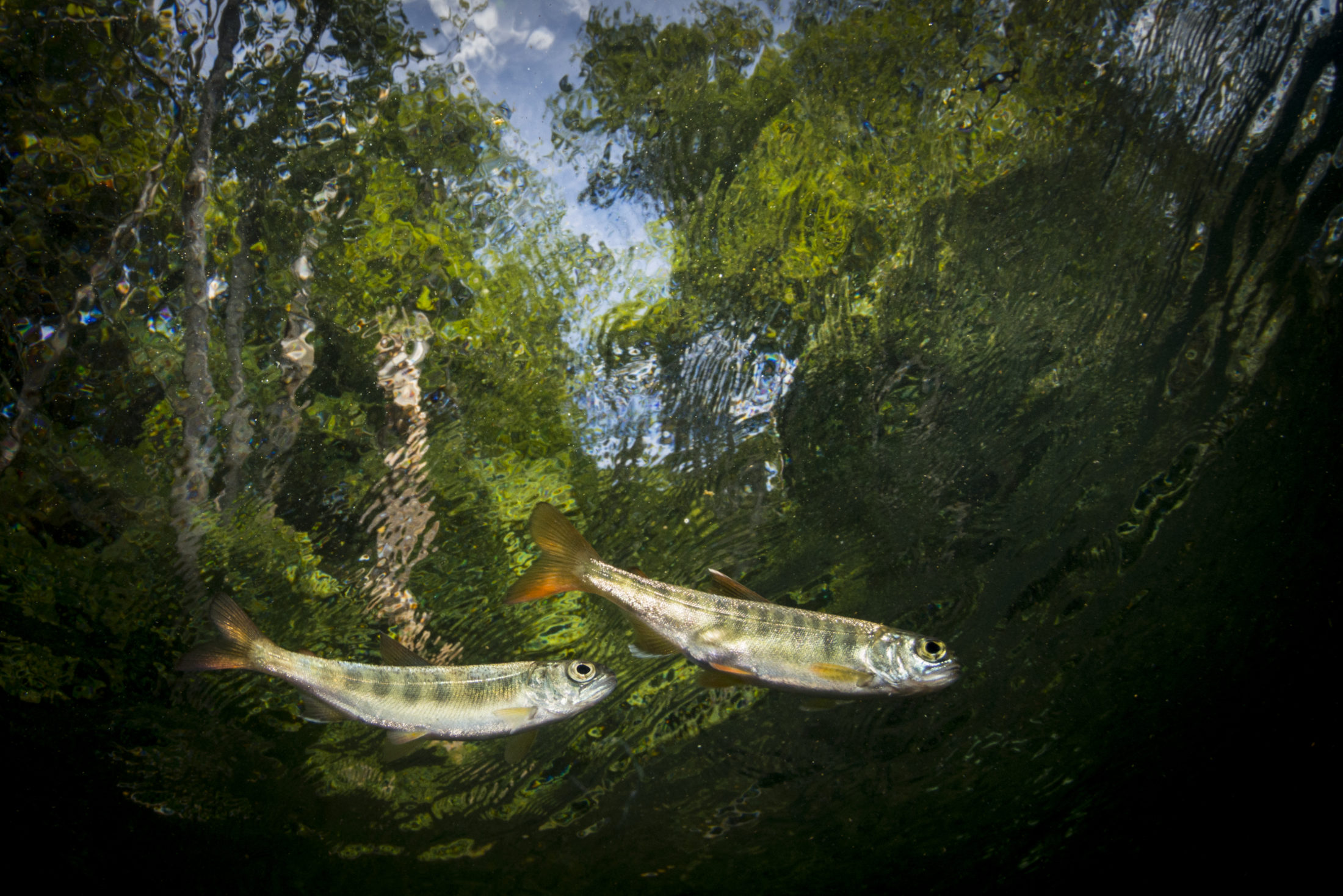
Telkwa Coal has to report on the potential impacts of the project on salmon but not on water because the water that could potentially be affected by the project is not designed a “valued component.” Photo: Eiko Jones / Watershed Watch Salmon Society
The new act also addresses professional reliance, Skuce explains.
“A massive issue with former environmental assessments was that the company would contract out different experts to do their environmental assessment studies, but they could also decide that they didn’t like the science and would just never release it and hire somebody else to produce more favourable results.”
The new act requires industry to contract the best available scientists. This government oversight means the science in an environmental assessment is independent and not geared toward finding results that support the company’s project.
Community members are also concerned the environmental assessment doesn’t require the company to report on studies assessing the potential effects of the mine on water — although it is doing such studies. This is because the water that might be affected by the project has not been designated a “valued component,” which, according to the Environmental Assessment Office guidelines, is a component of the environment deemed to have “scientific, ecological, economic, social, cultural, archaeological, historical or other importance.”
“It seems like that’s a glaring hole in the assessment,” said Jay Gilden, a member of What Matters in Our Valley. “If you don’t make it a valued component, then you don’t have to explain directly how you’re going to protect it.”
Gilden said although fish are included as a valued component, that has little bearing on the protection of the water.
“You can imperil the water, and as long as you can come up with some scheme for protecting the fish — put them in some side pond somewhere — it doesn’t matter what happens to the water. If you protect the watershed, then you protect the fish too.”
Gilden and others are attempting to address the omission through the public commenting process. “They shouldn’t be able to run the mine unless it is certain that it will not impact the water,” he said.
For Gilden, Cody and Schimke, water is absolutely a valued component of the Telkwa Coal project. Each speaks to the importance of the local creeks and rivers, and the aquatic life they support.
“The water is pretty awesome here,” Schimke said. “You can just drink it right from the creek.”
If a catastrophic event like the Mount Polley disaster were to occur here, the downstream effects would be far-reaching. Severe acid rock contamination of the creeks and rivers would lower the pH levels to a point where no aquatic life could survive.
“This would impact the Skeena, the Wedzin Kwa, the Telkwa,” Cody said. “It impacts everyone.”
A large-scale event isn’t the only concern. With an increasingly unpredictable climate, many residents are concerned about what would happen in drought conditions. Telkwa Coal would need to divert water from the creeks to use in its operations, which would impact water flow downstream. Conversely, extreme weather conditions could create runoff from the tailings ponds.
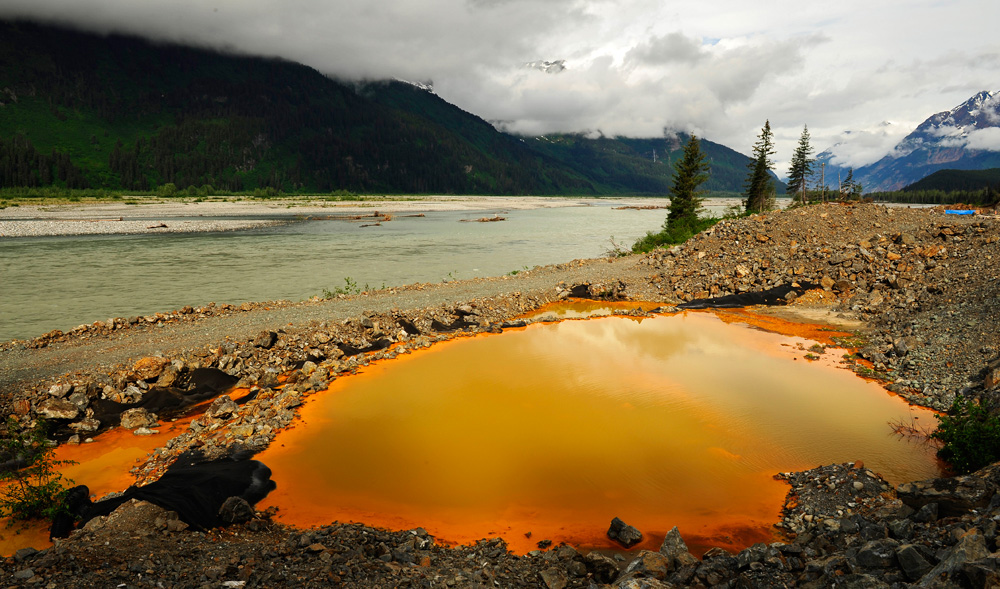
Water pits filled with acid mine drainage at the Tulsequah Chief mine in northwest B.C. Photo: Chris Miller / CSM Photos
And after the mine is eventually closed, the risk of acid rock drainage would last forever. It doesn’t take much to kill a river. The small Mount Washington mine on the Tsolum River, for instance, decimated the local fish population.
Skuce points to the Tulsequah Chief mine, an abandoned mixed-metals mine in northwest B.C. that has been leaching contaminated water for over 60 years into an important tributary of the salmon-producing Taku River.
“If a tailings pond or a mine is going to require water treatment in perpetuity, which means forever, and there is a risk to salmon, should we actually allow that to happen?” Skuce asked. “Because we have all these legacies that show we probably shouldn’t.”
The proposed project overlaps with the Telkwa caribou herd recovery area, a 1,300-square-kilometre region designed to monitor and protect the endangered herd. At the last count in October, there were just 32 caribou.
Retired ecosystems biologist Len Vanderstar was involved in setting up the protected area and recovery plan in the 1990s. He’s concerned that constructing a coal mine so close to vital habitat could reverse the successes in protecting the herd.
“What more cumulative impact can a herd take that is listed as threatened and in imminent threat of extirpation?” he asks. “How many more times will the dice be rolled before we blink these creatures off the landscape?”
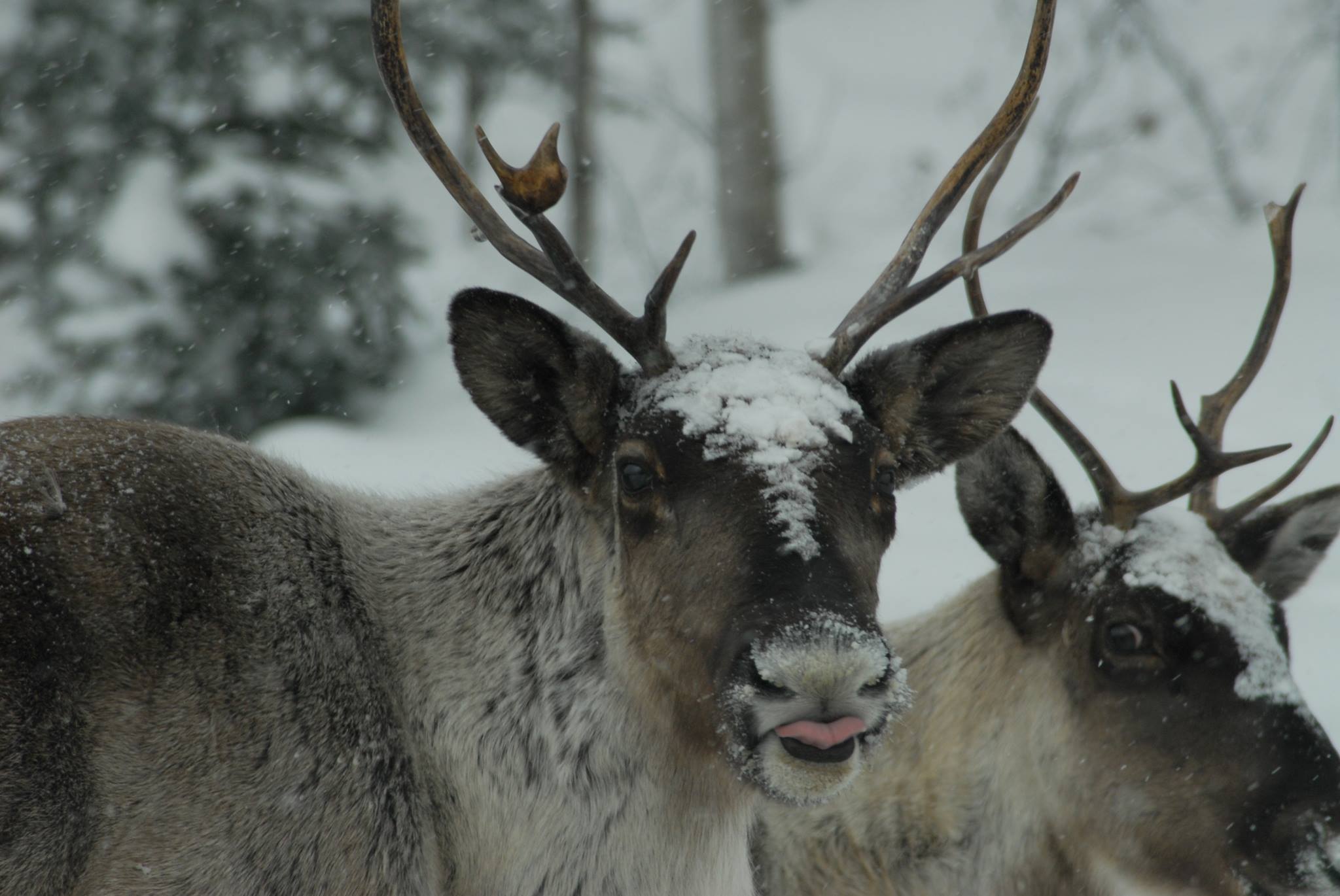
The proposed Telkwa Coal mine would be in the middle of the Telkwa caribou herd recovery area. At last count, there were only 32 caribou left in the herd. Photo: Telkwa Caribou Recovery / Facebook
The caribou historically used the Tenas Creek area, where the mine will be located, though not in recent years. But Vanderstar is concerned about the mine’s proximity to important post-calving grounds, known locally as the Camel Humps.
Vanderstar points out that the document outlining the issues to be covered in the environmental assessment doesn’t mention the potential of blasting to displace caribou, especially in the Camel Humps. “The proponent and government know about this concern, so why is it not reflected?” he asks.
This isn’t the first time a mine has been proposed in critical caribou habitat. The proposed Sukunka mine in the Peace region would directly impact the Quintette caribou herd, which is listed as threatened under the Species at Risk Act
Canada produces about 60 million tonnes of coal every year — half of which is thermal coal for power generation and half of which is metallurgical coal, which is used primarily in industrial steel production. About 70 per cent of the world’s steel is made with coal, according to the World Coal Association.
Before it can be used, metallurgical coal has to be coked — a heating process that carbonizes it. It is then burned in a blast furnace with other raw materials — primarily iron ore — and most of it ends up as carbon dioxide.
Globally, the use of coal — both thermal and metallurgical — produces about 40 per cent of the world’s fossil fuel greenhouse gas emissions. Burning coal also produces particulates and other gases like sulphur dioxide and nitrogen oxides, all of which can impact human health.
There are alternative ways to manufacture steel that produce lower emissions. Manufacturers use electric arc furnaces to melt recycled scrap metal and produce steel. While this process produces fewer emissions than using coal, the furnaces require huge amounts of electricity. Several companies are also developing hydrogen technologies to create zero-emissions steel production.
“In terms of steel production, we need to look at other options,” Cody said. “This much we know: steel-making with coal is bad for the climate.”
Mark Gray, chairman and managing director of Allegiance and Telkwa Coal, is Māori. He opened a recent virtual open house with a traditional Māori greeting, speaking first to the Wet’suwet’en. The Office of the Wet’suwet’en is engaging with the company and the B.C. Environmental Assessment Office through working groups and consultation.
When the Wet’suwet’en asked Telkwa Coal last winter to put the project on hold while they worked through more pressing issues with the Coastal GasLink pipeline project, the company agreed.
“We paused for nearly eight months, I think it was, before we restarted, so that they could focus on other matters,” Waterman said. “And what we can say is our relationship is of great importance. Our role is to present a plan, to answer questions and address concerns.”
This doesn’t mean the Wet’suwet’en support the project. It just means they’re engaging with the proponent and following the prescribed provincial process. David DeWit, natural resources manager with the Office of the Wet’suwet’en, is cautious.
“Status quo process has proved to be inadequate for the [Coastal GasLink] pipeline project,” he writes in an email. “In a time when the Wet’suwet’en are defining how Wet’suwet’en title is implemented and informs B.C. process, we need courageous leaders from all parties: Wet’suwet’en, B.C. and the company.”
After the public comment period closes on July 23, Telkwa Coal will review the comments and submit a public consultation report to the Environmental Assessment Office. The application information requirements document is then finalized and the proponent conducts all the required studies to prepare its official application for an environmental assessment certificate.
Waterman predicts the application will be ready late this year or early next year. “At that stage, once we submit it, then there will be one or two other public consultation periods.”
Cody is dubious the project will go through, pointing out that one of the previous companies that tried to develop a mine at the site was Minalta, in the 1990s. At the time, Minalta was Canada’s largest coal-producing company. Telkwa Coal, in comparison, is what is known as a junior mining company, which means the company has no sources of revenue and is staking its future on the mine getting the green light. But she still urges the public to be involved.
“We believe people need to be commenting and engaging. People can make a difference.”
Get the inside scoop on The Narwhal’s environment and climate reporting by signing up for our free newsletter. A $335 million funding commitment to fund...
Continue reading
Canada’s first-ever Indigenous governor general doesn’t play favourites among our majestic natural wonders, but she...

In Alberta, a massive open-pit coal mine near Jasper National Park is hoping to expand...

A trade war could help remake B.C.’s food system, but will family farmers be left...
